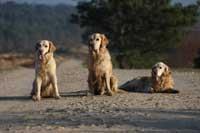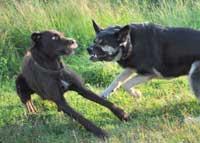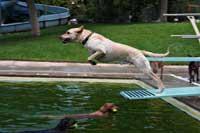Identity and longevity of dogs

After analyzing many species of animals, from ants to primates, scientists have come to the conclusion that some animals have identity. Some are timid and others are skilled or aggressive. According to the biologists, these different forms of being and the history of life itself have been evolving hand in hand. Bold and aggressive animals use a lot of energy and their lives are relatively short, while the calmer live longer. That is, the hope of survival may be due to the energy dissipated by a certain identity, which at least is affected.
A group of researchers from Quebec (Canada) has directed their latest work to the field of domesticated dogs. The American Naturalist has released the results.

According to them, the differences between the canine races are a sample of experiments performed “by artificial selection”. That is, they have confirmed that racial diversity or the difference in survival among races is not the result of natural selection. For many years, the man has tried to get the most appropriate or desired type of dog for each use. On this path there have been changes in some of the hallmarks of canine nature, which biologists consider directly related to longevity and metabolism.
Obedience, aggressiveness
The Canadian group has recently analyzed the correlation between the identity of domesticated dogs and other characteristics related to survival. To obtain information on the energy expenditure and longevity of the different races, he has used other studies and the record of canine insurance, among others. Above all, he wanted to demonstrate the correlation between activity, obedience and aggression.
He explains that dogs with better educational results, those considered to be more obedient (like the German shepherd), live longer than others of the same size, while those most difficult to train (like the breeds beagle or Pomerania) die earlier.

The hope of survival may be due to the energy dissipated by a certain identity. (Photo: Andrew Magill ) .
It has also been found that there is a correlation between size and activity: small dogs are more active than older dogs. However, they still do not know why these two features are related. It is possible that the human being has opted for dogs of small size but high activity in his “artificial selection”. Another alternative would be that genes that affect size directly affect activity.
For the biologists of the University of Groning (Holland), the results of Quebec are somehow related to the expression “live fast, die early” and consider that they are closely related to what natural selection models foresee. However, this view is not shared at the University of Ohio. It is not clear that the effects on dogs are conclusive. “We cannot yet speak of general conclusions,” they say. Dogs are totally opposite to what you can foresee about longevity in nature. Elephants, for example, live for decades and a rat can survive only three years. For its part, a Chihuahua survives more than a San Bernardo.”
Published in 7K.
Buletina
Bidali zure helbide elektronikoa eta jaso asteroko buletina zure sarrera-ontzian











